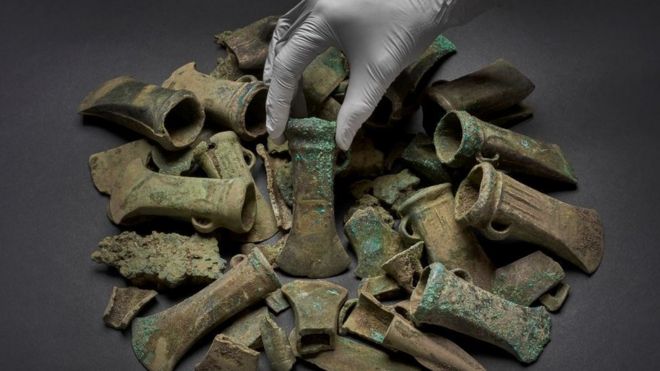This collection of bronze artifacts was contained in a pouch or box and lost on a battlefield 3300 years ago, archaeologists say.
THOMAS TERBERGER/UNIVERSITY OF GÖTTINGEN/LOWER SAXONY STATE OFFICE FOR CULTURAL HERITAGE
Bronze Age Europe was a violent place. But only recently have scientists uncovered the scope of the violence, at a 3000-year-old site in northern Germany where thousands of well-armed young men fought with sophisticated weapons in what appears to be an epic battle. Now, a bagful of bronze artifacts and tools found at the bottom of the river in the middle of the battlefield suggests some of these warriors traveled from hundreds of kilometers away to fight. That suggests northern European societies were organized on such a large scale that leaders could call warriors to distant battlefields, long before modern communication systems and roads.
“It’s extremely rare to find a box or pouch [like this],” on an ancient battlefield, says Thomas Terberger, an archaeologist with the Lower Saxony State Office for Cultural Heritage in Hanover, Germany, who describes the find with colleagues in a paper published today in Antiquity. “Somebody lost it there.”
Read the rest of this article...













